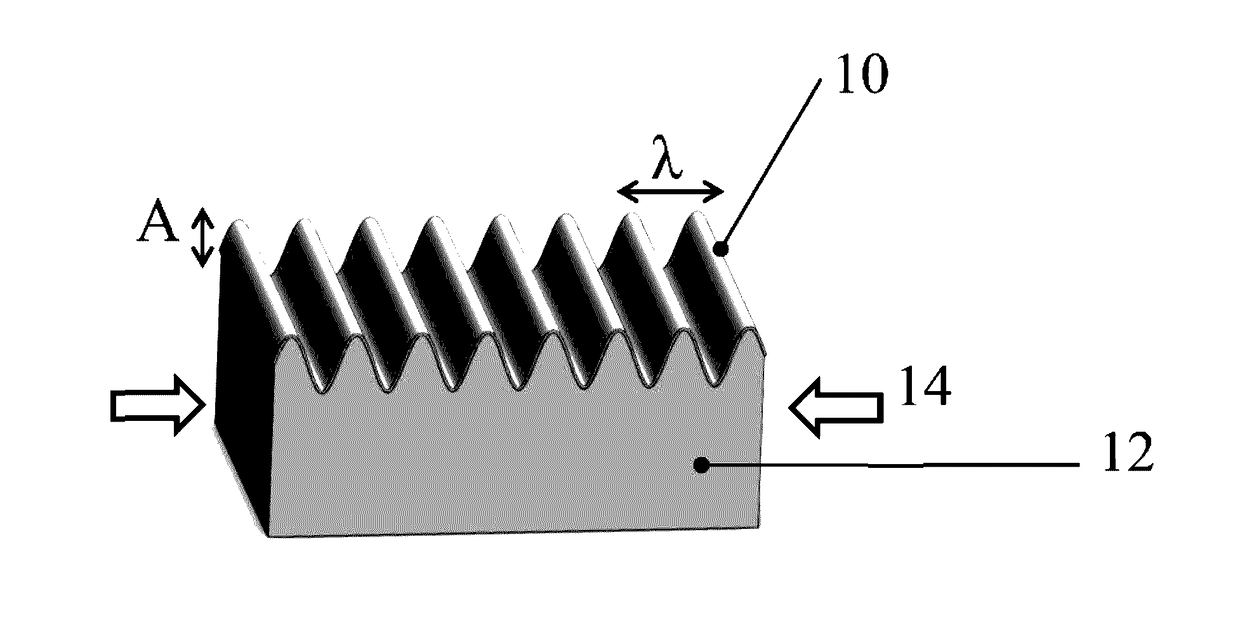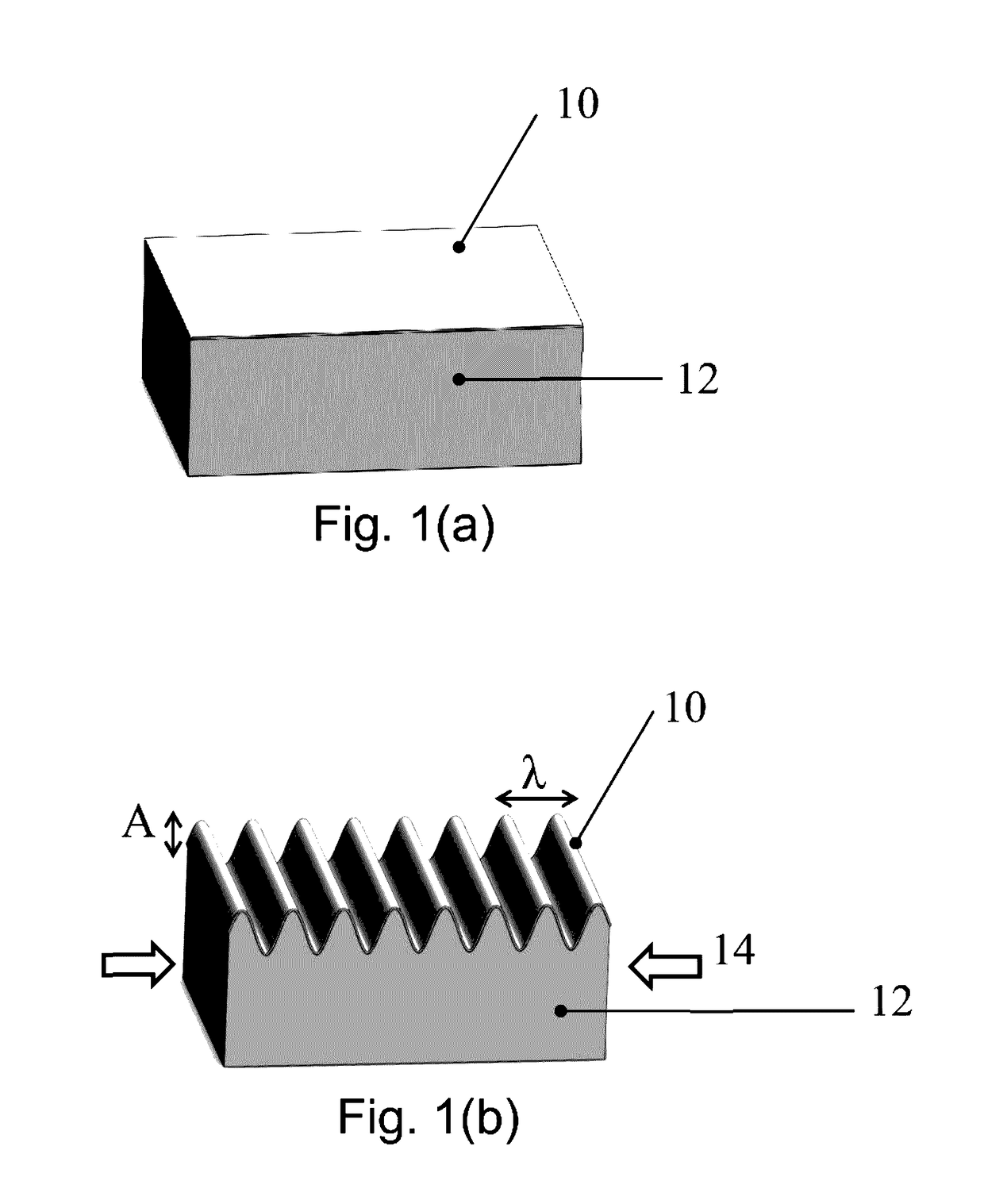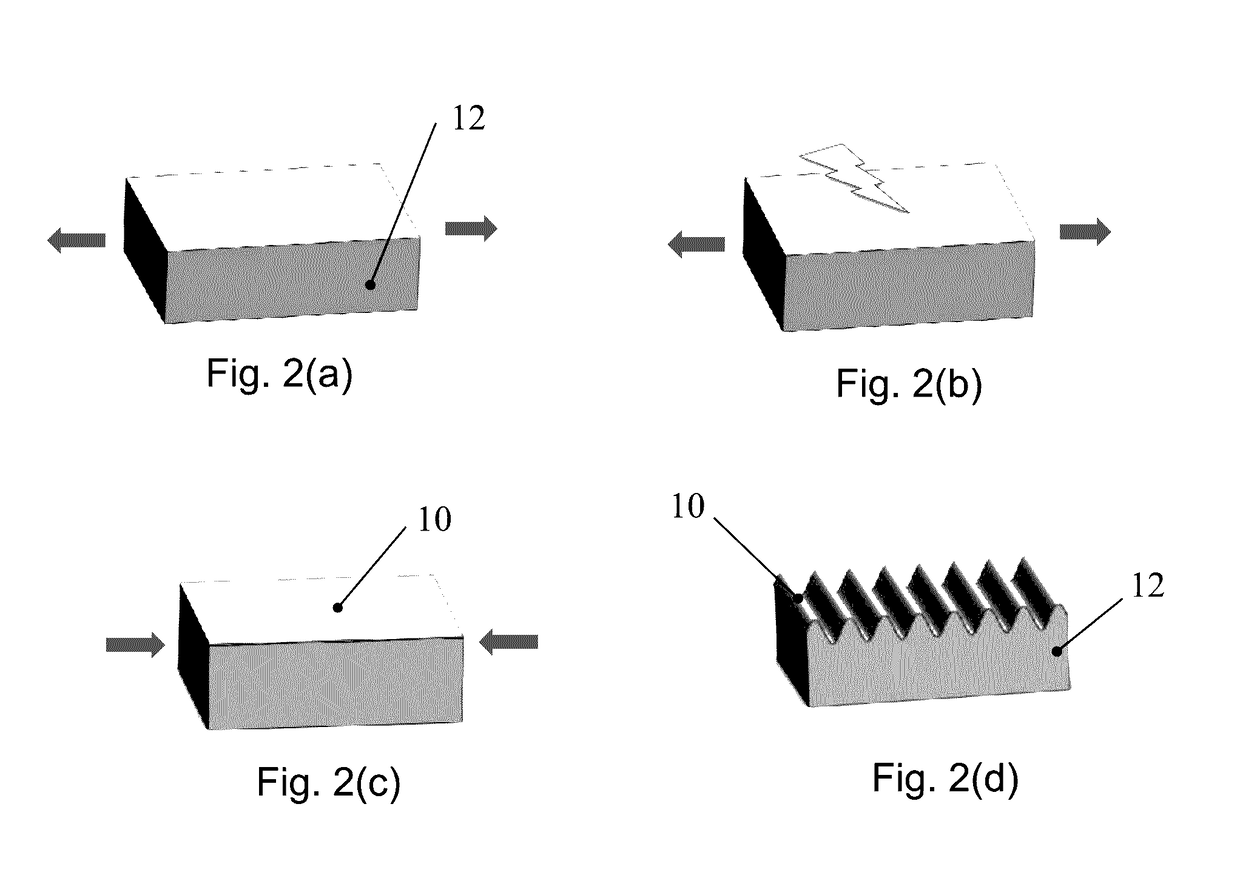Method to fabricate asymmetric wrinkles using biaxial strains
a technology of asymmetric wrinkles and strains, applied in the direction of vacuum evaporation coatings, chemical vapor deposition coatings, coatings, etc., can solve the problems of limited ability of current tensile stages to provide, lack of flexibility, and limited practicability of this process, so as to reduce the size of the stage, maintain structural rigidity, and quick and accurate registration
- Summary
- Abstract
- Description
- Claims
- Application Information
AI Technical Summary
Benefits of technology
Problems solved by technology
Method used
Image
Examples
Embodiment Construction
[0017]To enable the fabrication and tuning of wrinkle patterns, one must solve these sub-problems: (i) fabrication of a bilayer system with the desired material properties and geometry, (ii) compression of the top stiff film, and (iii) in-situ visualization of pattern formation.
[0018]Stretchable bilayers with large stiffness ratio can be fabricated by attaching or growing a thin stiff film 10 on top of a thick elastomeric base 12. For example, exposing a polydimethylsiloxane (PDMS) film to air or oxygen plasma leads to the formation of a thin glassy layer on top of the exposed PDMS surface via oxidation. Alternatively, a metallic or polymeric thin film may be deposited on top of PDMS to obtain the desired bilayer. The top layer thickness can be tuned by controlling the duration of plasma oxidation or the deposition process; whereas the stiffness ratio may be tuned by selecting the appropriate top / bottom materials. The preferred embodiment of the stage can be used with both plasma ox...
PUM
| Property | Measurement | Unit |
|---|---|---|
| width | aaaaa | aaaaa |
| width | aaaaa | aaaaa |
| width | aaaaa | aaaaa |
Abstract
Description
Claims
Application Information
 Login to View More
Login to View More - R&D
- Intellectual Property
- Life Sciences
- Materials
- Tech Scout
- Unparalleled Data Quality
- Higher Quality Content
- 60% Fewer Hallucinations
Browse by: Latest US Patents, China's latest patents, Technical Efficacy Thesaurus, Application Domain, Technology Topic, Popular Technical Reports.
© 2025 PatSnap. All rights reserved.Legal|Privacy policy|Modern Slavery Act Transparency Statement|Sitemap|About US| Contact US: help@patsnap.com



